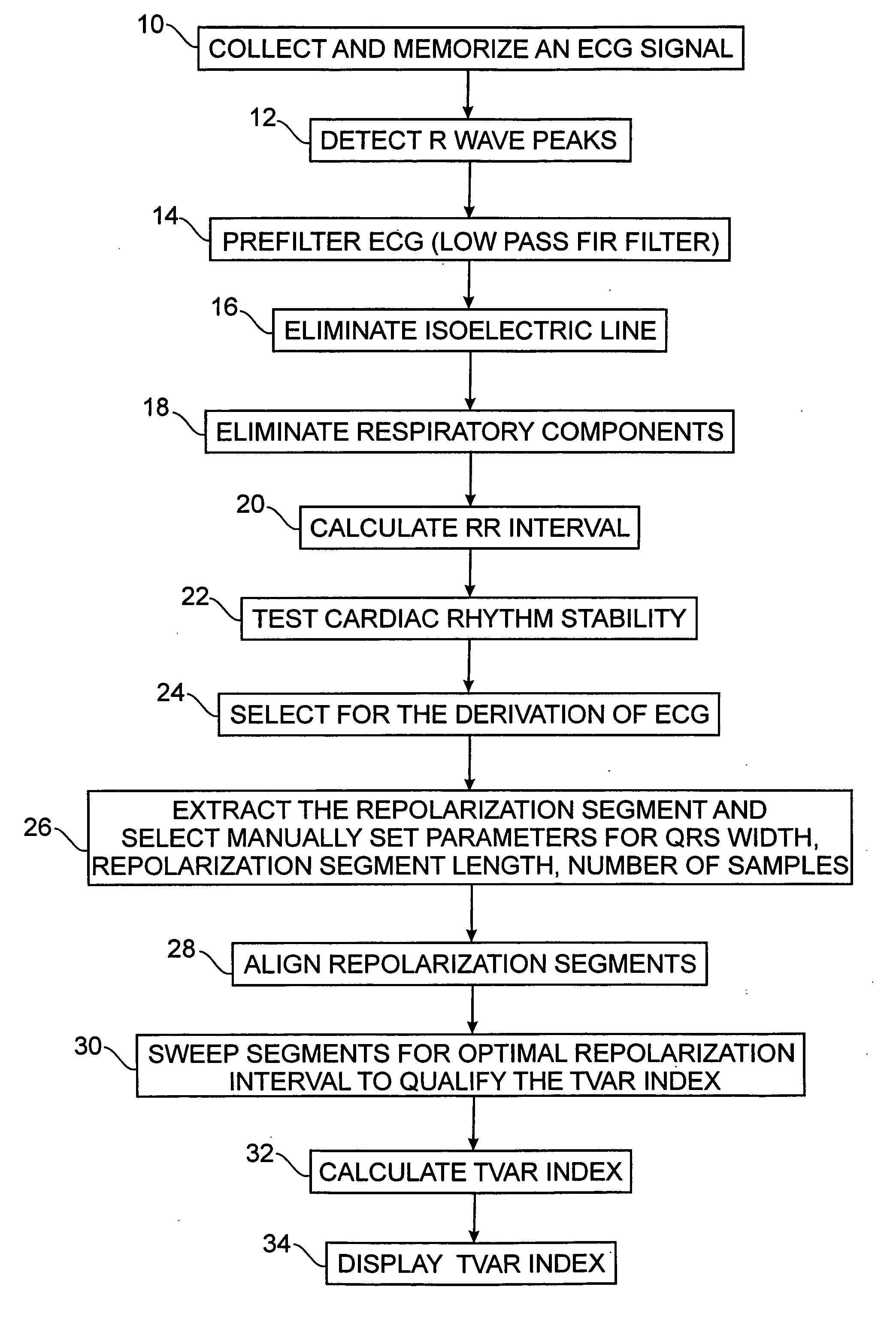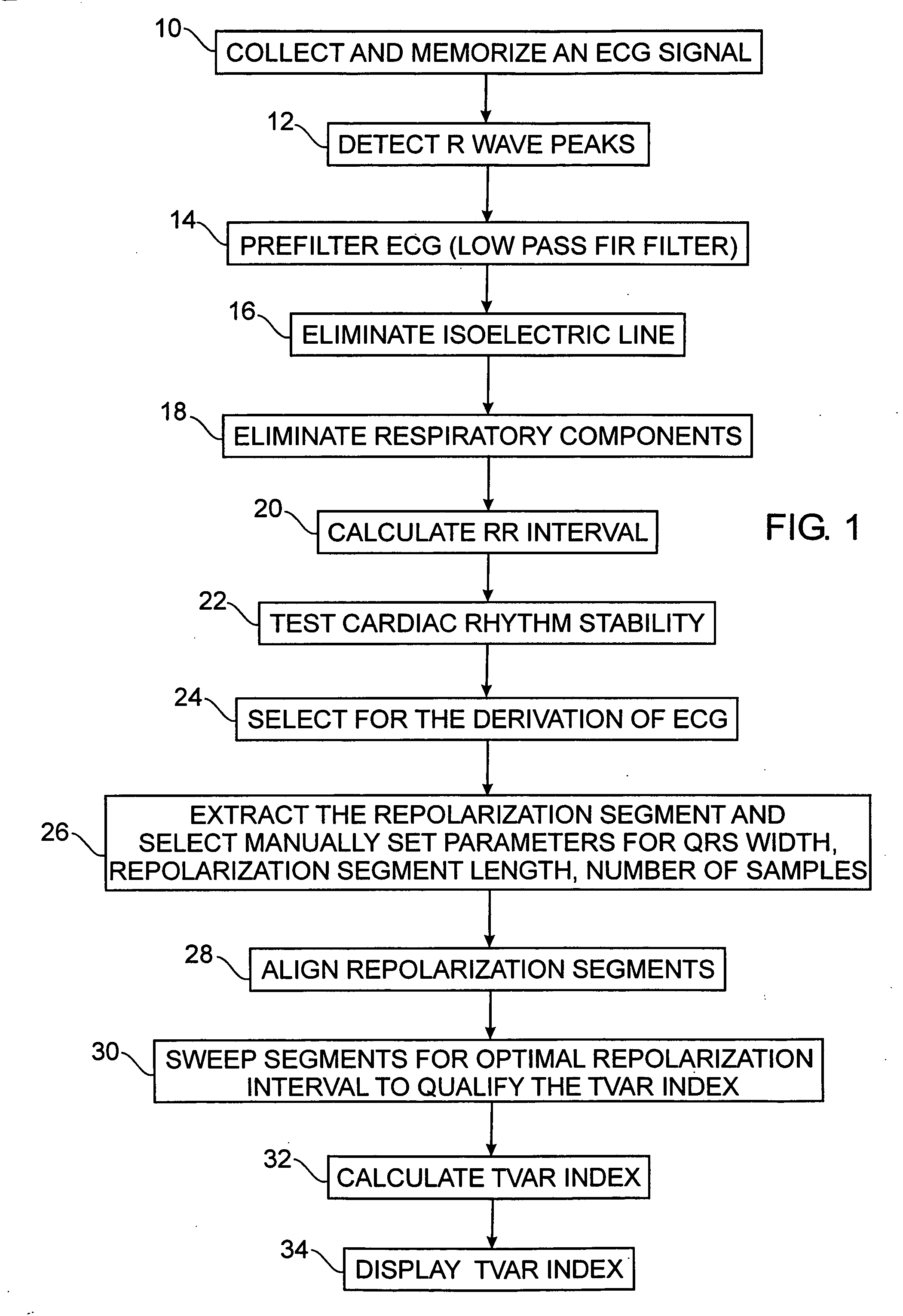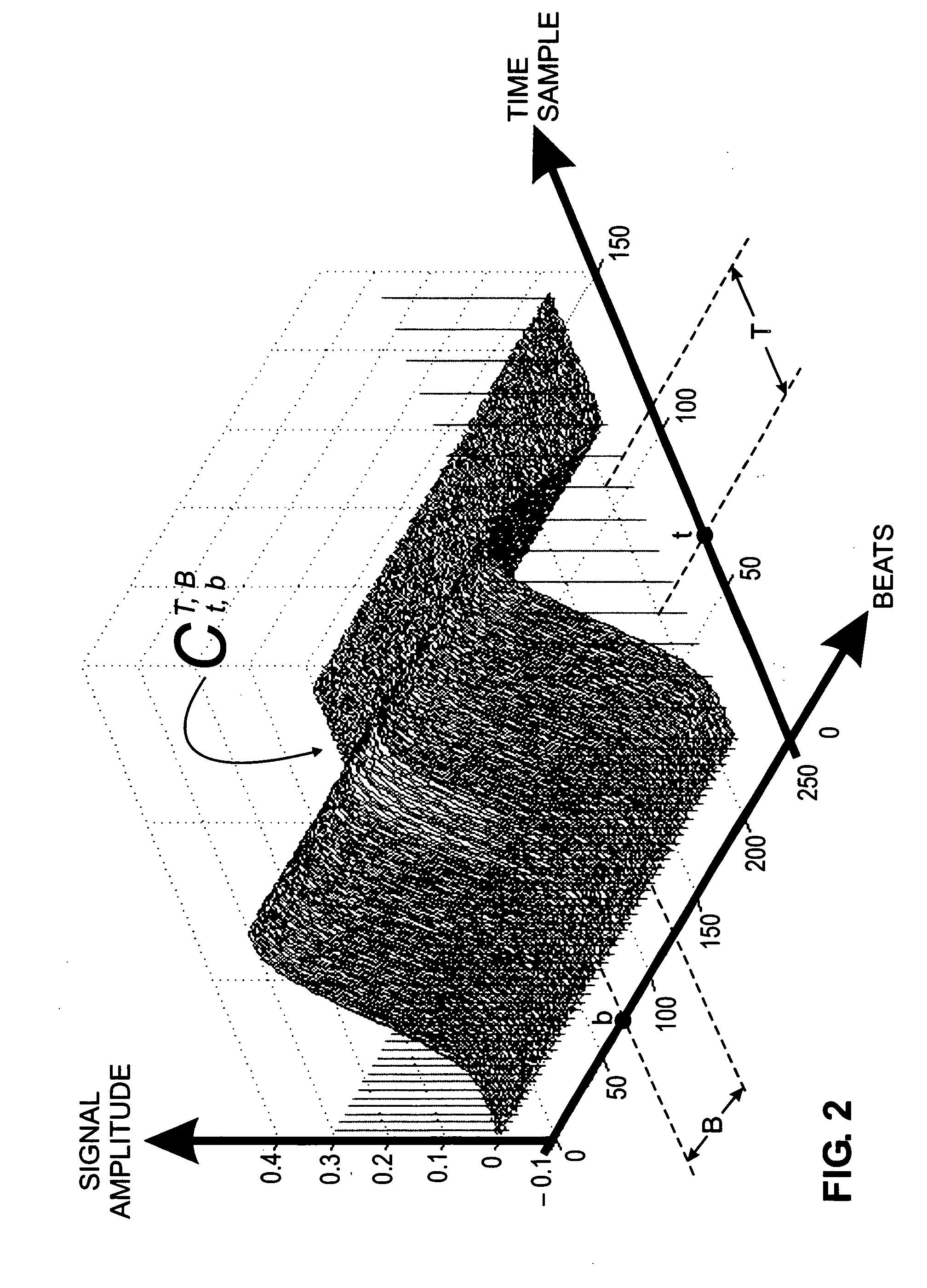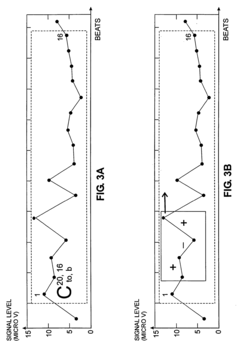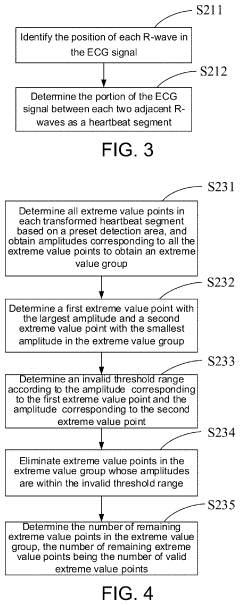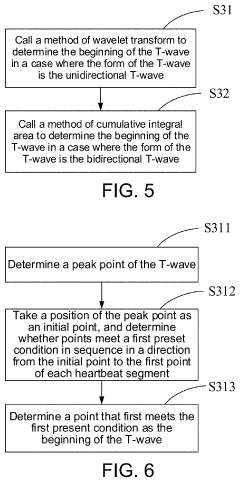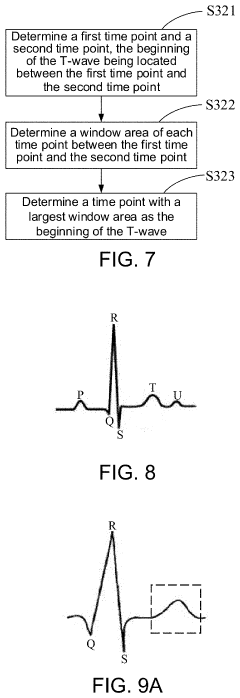Unraveling incidental T wave inversion patterns in extensive cardiovascular datasets
AUG 19, 20259 MIN READ
Generate Your Research Report Instantly with AI Agent
Patsnap Eureka helps you evaluate technical feasibility & market potential.
T Wave Inversion Background and Objectives
T wave inversion (TWI) is a critical electrocardiographic finding that has long been recognized as a potential indicator of various cardiovascular conditions. Over the years, the interpretation of TWI patterns has evolved significantly, with researchers and clinicians striving to unravel its complex implications in extensive cardiovascular datasets. This technological challenge aims to enhance our understanding of incidental TWI patterns and their clinical significance.
The historical context of TWI research dates back to the early days of electrocardiography, with initial observations linking it to myocardial ischemia. However, as our knowledge expanded, it became evident that TWI could be associated with a wide range of cardiac and non-cardiac conditions, including cardiomyopathies, pulmonary embolism, and even normal variants in certain populations.
Recent advancements in data collection and analysis techniques have opened new avenues for exploring TWI patterns on a larger scale. The availability of extensive cardiovascular datasets, encompassing diverse patient populations and clinical scenarios, provides an unprecedented opportunity to delve deeper into the nuances of TWI manifestations.
The primary objective of this technological endeavor is to develop sophisticated algorithms and analytical tools capable of identifying and categorizing incidental TWI patterns within these vast datasets. By leveraging machine learning and artificial intelligence techniques, we aim to uncover subtle relationships and correlations that may have eluded traditional analytical methods.
Furthermore, this research seeks to establish a more comprehensive understanding of the factors influencing TWI occurrence, including age, gender, ethnicity, and underlying medical conditions. By doing so, we hope to refine the diagnostic and prognostic value of TWI in various clinical contexts, potentially leading to more personalized and accurate risk stratification strategies.
Another crucial goal is to differentiate between benign and pathological TWI patterns more effectively. This distinction is particularly important in preventing unnecessary diagnostic procedures and interventions in cases where TWI may represent a normal variant or a transient phenomenon.
The technological challenges inherent in this endeavor are multifaceted. They include the need for robust data preprocessing techniques to ensure the quality and consistency of ECG signals across different recording systems and clinical settings. Additionally, developing algorithms capable of accurately detecting and characterizing TWI patterns amidst the inherent variability of ECG waveforms presents a significant hurdle.
By addressing these challenges and achieving the outlined objectives, we anticipate significant advancements in the field of cardiovascular diagnostics. The insights gained from this research have the potential to enhance clinical decision-making, improve patient outcomes, and contribute to the broader understanding of cardiac electrophysiology.
The historical context of TWI research dates back to the early days of electrocardiography, with initial observations linking it to myocardial ischemia. However, as our knowledge expanded, it became evident that TWI could be associated with a wide range of cardiac and non-cardiac conditions, including cardiomyopathies, pulmonary embolism, and even normal variants in certain populations.
Recent advancements in data collection and analysis techniques have opened new avenues for exploring TWI patterns on a larger scale. The availability of extensive cardiovascular datasets, encompassing diverse patient populations and clinical scenarios, provides an unprecedented opportunity to delve deeper into the nuances of TWI manifestations.
The primary objective of this technological endeavor is to develop sophisticated algorithms and analytical tools capable of identifying and categorizing incidental TWI patterns within these vast datasets. By leveraging machine learning and artificial intelligence techniques, we aim to uncover subtle relationships and correlations that may have eluded traditional analytical methods.
Furthermore, this research seeks to establish a more comprehensive understanding of the factors influencing TWI occurrence, including age, gender, ethnicity, and underlying medical conditions. By doing so, we hope to refine the diagnostic and prognostic value of TWI in various clinical contexts, potentially leading to more personalized and accurate risk stratification strategies.
Another crucial goal is to differentiate between benign and pathological TWI patterns more effectively. This distinction is particularly important in preventing unnecessary diagnostic procedures and interventions in cases where TWI may represent a normal variant or a transient phenomenon.
The technological challenges inherent in this endeavor are multifaceted. They include the need for robust data preprocessing techniques to ensure the quality and consistency of ECG signals across different recording systems and clinical settings. Additionally, developing algorithms capable of accurately detecting and characterizing TWI patterns amidst the inherent variability of ECG waveforms presents a significant hurdle.
By addressing these challenges and achieving the outlined objectives, we anticipate significant advancements in the field of cardiovascular diagnostics. The insights gained from this research have the potential to enhance clinical decision-making, improve patient outcomes, and contribute to the broader understanding of cardiac electrophysiology.
Clinical Significance and Market Demand
T wave inversion patterns in electrocardiograms (ECGs) have long been recognized as potential indicators of cardiovascular abnormalities. However, the incidental occurrence of these patterns in extensive datasets has presented both challenges and opportunities in clinical cardiology. The clinical significance of incidental T wave inversions lies in their potential to reveal underlying cardiac conditions that may otherwise go undetected.
In recent years, the market demand for advanced ECG interpretation tools has grown substantially, driven by the increasing prevalence of cardiovascular diseases and the need for early detection and prevention. Healthcare providers and researchers are seeking more sophisticated methods to analyze large-scale ECG datasets, particularly focusing on subtle abnormalities like incidental T wave inversions.
The ability to unravel these patterns in extensive cardiovascular datasets holds immense value for improving patient care and outcomes. By identifying previously overlooked T wave inversions, clinicians can potentially detect early signs of conditions such as myocardial ischemia, cardiomyopathies, or electrolyte imbalances. This early detection capability can lead to timely interventions, reducing the risk of adverse cardiac events and improving overall patient prognosis.
From a market perspective, the demand for advanced ECG analysis tools is being fueled by several factors. Firstly, the aging global population is contributing to a rise in cardiovascular diseases, necessitating more accurate diagnostic tools. Secondly, the increasing adoption of digital health technologies and electronic health records has made it possible to collect and analyze vast amounts of ECG data, creating opportunities for more comprehensive studies of T wave inversion patterns.
Healthcare institutions are increasingly investing in artificial intelligence and machine learning technologies to enhance ECG interpretation capabilities. These technologies offer the potential to analyze large datasets more efficiently and accurately than traditional manual methods, making them particularly well-suited for identifying subtle patterns like incidental T wave inversions.
The market for ECG analysis tools that can unravel incidental T wave inversion patterns is expected to grow significantly in the coming years. This growth is driven by the need for more precise diagnostic tools in cardiology, the increasing emphasis on preventive healthcare, and the ongoing digitalization of medical records and diagnostic processes.
In recent years, the market demand for advanced ECG interpretation tools has grown substantially, driven by the increasing prevalence of cardiovascular diseases and the need for early detection and prevention. Healthcare providers and researchers are seeking more sophisticated methods to analyze large-scale ECG datasets, particularly focusing on subtle abnormalities like incidental T wave inversions.
The ability to unravel these patterns in extensive cardiovascular datasets holds immense value for improving patient care and outcomes. By identifying previously overlooked T wave inversions, clinicians can potentially detect early signs of conditions such as myocardial ischemia, cardiomyopathies, or electrolyte imbalances. This early detection capability can lead to timely interventions, reducing the risk of adverse cardiac events and improving overall patient prognosis.
From a market perspective, the demand for advanced ECG analysis tools is being fueled by several factors. Firstly, the aging global population is contributing to a rise in cardiovascular diseases, necessitating more accurate diagnostic tools. Secondly, the increasing adoption of digital health technologies and electronic health records has made it possible to collect and analyze vast amounts of ECG data, creating opportunities for more comprehensive studies of T wave inversion patterns.
Healthcare institutions are increasingly investing in artificial intelligence and machine learning technologies to enhance ECG interpretation capabilities. These technologies offer the potential to analyze large datasets more efficiently and accurately than traditional manual methods, making them particularly well-suited for identifying subtle patterns like incidental T wave inversions.
The market for ECG analysis tools that can unravel incidental T wave inversion patterns is expected to grow significantly in the coming years. This growth is driven by the need for more precise diagnostic tools in cardiology, the increasing emphasis on preventive healthcare, and the ongoing digitalization of medical records and diagnostic processes.
Current Challenges in T Wave Inversion Analysis
The analysis of T wave inversion patterns in extensive cardiovascular datasets presents several significant challenges that researchers and clinicians must address. One of the primary difficulties lies in the sheer volume and complexity of the data involved. Cardiovascular datasets often encompass a vast array of variables, including patient demographics, medical histories, and various physiological measurements, making it challenging to isolate and interpret T wave inversion patterns accurately.
Furthermore, the incidental nature of these inversions adds another layer of complexity. Distinguishing between pathological T wave inversions and benign variants requires sophisticated algorithms and deep domain knowledge. The heterogeneity of T wave morphologies across different patient populations and cardiac conditions further complicates the analysis, necessitating robust and adaptable analytical approaches.
Another significant challenge is the need for standardization in data collection and interpretation. Variations in ECG recording techniques, equipment calibration, and even patient positioning can introduce inconsistencies that may affect the reliability of T wave inversion analysis. Establishing uniform protocols and quality control measures across different healthcare settings and research institutions is crucial for ensuring comparable and reproducible results.
The dynamic nature of T wave inversions poses additional challenges. These patterns can evolve over time or in response to various physiological and pathological conditions, requiring longitudinal studies and advanced temporal analysis techniques. Capturing and interpreting these temporal changes in the context of extensive datasets demands sophisticated time-series analysis methods and machine learning algorithms capable of handling high-dimensional, time-varying data.
Moreover, the interpretation of T wave inversions is often context-dependent, necessitating the integration of multiple data sources. Correlating ECG findings with imaging studies, biomarkers, and clinical outcomes is essential for a comprehensive understanding but introduces challenges in data integration and multi-modal analysis. Developing frameworks that can effectively synthesize information from diverse sources while maintaining interpretability remains a significant hurdle.
Lastly, the translation of research findings into clinical practice presents its own set of challenges. Developing user-friendly tools and decision support systems that can assist clinicians in real-time interpretation of T wave inversions within the context of extensive datasets is crucial. These systems must be both accurate and explainable, allowing for transparent decision-making processes that can be validated and trusted by healthcare professionals.
Furthermore, the incidental nature of these inversions adds another layer of complexity. Distinguishing between pathological T wave inversions and benign variants requires sophisticated algorithms and deep domain knowledge. The heterogeneity of T wave morphologies across different patient populations and cardiac conditions further complicates the analysis, necessitating robust and adaptable analytical approaches.
Another significant challenge is the need for standardization in data collection and interpretation. Variations in ECG recording techniques, equipment calibration, and even patient positioning can introduce inconsistencies that may affect the reliability of T wave inversion analysis. Establishing uniform protocols and quality control measures across different healthcare settings and research institutions is crucial for ensuring comparable and reproducible results.
The dynamic nature of T wave inversions poses additional challenges. These patterns can evolve over time or in response to various physiological and pathological conditions, requiring longitudinal studies and advanced temporal analysis techniques. Capturing and interpreting these temporal changes in the context of extensive datasets demands sophisticated time-series analysis methods and machine learning algorithms capable of handling high-dimensional, time-varying data.
Moreover, the interpretation of T wave inversions is often context-dependent, necessitating the integration of multiple data sources. Correlating ECG findings with imaging studies, biomarkers, and clinical outcomes is essential for a comprehensive understanding but introduces challenges in data integration and multi-modal analysis. Developing frameworks that can effectively synthesize information from diverse sources while maintaining interpretability remains a significant hurdle.
Lastly, the translation of research findings into clinical practice presents its own set of challenges. Developing user-friendly tools and decision support systems that can assist clinicians in real-time interpretation of T wave inversions within the context of extensive datasets is crucial. These systems must be both accurate and explainable, allowing for transparent decision-making processes that can be validated and trusted by healthcare professionals.
Existing T Wave Inversion Detection Methods
01 T wave inversion detection in ECG analysis
Methods and systems for detecting T wave inversion patterns in electrocardiogram (ECG) signals. This involves analyzing the morphology and polarity of T waves to identify abnormal inversions, which can be indicative of various cardiac conditions. Advanced signal processing techniques are employed to accurately detect and characterize these inversions.- ECG signal analysis for T wave inversion detection: Advanced algorithms and methods are developed to analyze ECG signals for detecting T wave inversion patterns. These techniques involve signal processing, feature extraction, and pattern recognition to accurately identify and characterize T wave inversions, which can be indicative of various cardiac conditions.
- Imaging techniques for visualizing T wave inversions: Various imaging technologies and display methods are employed to visualize T wave inversion patterns in ECG data. These include advanced graphical representations, 3D modeling, and color-coded displays to enhance the interpretation and analysis of T wave morphology changes.
- Machine learning and AI for T wave inversion classification: Artificial intelligence and machine learning algorithms are utilized to classify and predict T wave inversion patterns. These systems are trained on large datasets of ECG recordings to improve accuracy in identifying different types of T wave inversions and their clinical significance.
- Wearable devices for continuous T wave monitoring: Wearable ECG devices are developed for continuous monitoring of T wave patterns. These devices incorporate miniaturized sensors and wireless communication technologies to enable real-time detection and analysis of T wave inversions in ambulatory settings.
- Integration of T wave inversion analysis in cardiac diagnostic systems: Comprehensive cardiac diagnostic systems are designed to incorporate T wave inversion analysis as a key component. These integrated systems combine multiple cardiac parameters and biomarkers to provide a holistic assessment of heart health, with T wave inversion patterns contributing to risk stratification and diagnosis of various cardiac conditions.
02 Machine learning algorithms for T wave pattern recognition
Application of machine learning and artificial intelligence techniques to recognize and classify T wave inversion patterns. These algorithms are trained on large datasets of ECG signals to improve accuracy in identifying various types of T wave inversions and their clinical significance.Expand Specific Solutions03 Wearable devices for continuous T wave monitoring
Development of wearable ECG devices capable of continuous monitoring and real-time detection of T wave inversions. These devices incorporate miniaturized sensors and advanced signal processing to provide long-term ECG data collection and analysis, enabling early detection of cardiac abnormalities.Expand Specific Solutions04 3D visualization of T wave inversion patterns
Techniques for three-dimensional visualization and mapping of T wave inversion patterns in the heart. This approach allows for better spatial understanding of the inversion's origin and extent, aiding in diagnosis and treatment planning for various cardiac conditions.Expand Specific Solutions05 Integration of T wave analysis in cardiac imaging systems
Methods for integrating T wave inversion analysis with other cardiac imaging modalities such as MRI or CT scans. This combined approach provides a more comprehensive assessment of cardiac function and structure, correlating electrical abnormalities with anatomical features.Expand Specific Solutions
Key Players in Cardiovascular Data Analytics
The field of incidental T wave inversion pattern analysis in cardiovascular datasets is in a growth phase, with increasing market size and technological advancements. The global cardiac monitoring market, which encompasses this technology, is projected to reach significant value in the coming years. Technologically, the field is progressing rapidly, with companies like Medtronic, Pacesetter (part of Abbott), and CorVista Health leading innovation. These firms are developing AI-driven platforms and advanced ECG analysis tools to improve diagnostic accuracy. Academic institutions such as MIT, Zhejiang University, and Beth Israel Deaconess Medical Center are contributing to research advancements. The competitive landscape is diverse, including established medical device manufacturers, emerging AI-focused startups, and research-driven academic centers, all working to enhance cardiovascular diagnostics through advanced data analysis techniques.
Medtronic, Inc.
Technical Solution: Medtronic has developed an advanced AI-powered ECG analysis system to unravel incidental T wave inversion patterns in extensive cardiovascular datasets. The system utilizes deep learning algorithms trained on millions of ECG recordings to identify subtle T wave abnormalities that may indicate underlying cardiac issues. The AI model incorporates patient demographics, medical history, and other clinical data to provide context-aware interpretations[1]. Medtronic's solution also employs a novel time-series analysis technique to detect temporal changes in T wave morphology across multiple ECG leads, enhancing the accuracy of identifying pathological inversions versus benign variants[3].
Strengths: Comprehensive dataset for training, integration with patient history for contextual analysis. Weaknesses: Potential for overfitting to specific population demographics, reliance on high-quality input data.
Beth Israel Deaconess Medical Center, Inc.
Technical Solution: Beth Israel Deaconess Medical Center has developed a machine learning approach to analyze incidental T wave inversions in large-scale cardiovascular datasets. Their method combines convolutional neural networks (CNNs) with long short-term memory (LSTM) networks to capture both spatial and temporal features of ECG signals[2]. The system is trained on a diverse dataset of over 1 million ECGs, including various ethnicities and age groups. It incorporates a novel attention mechanism to focus on specific ECG leads and time intervals most relevant to T wave inversion patterns[4]. Additionally, the center has implemented a federated learning framework to collaborate with other institutions while maintaining patient privacy[5].
Strengths: Large and diverse training dataset, advanced neural network architecture. Weaknesses: Computationally intensive, may require significant hardware resources for real-time analysis.
Innovative Approaches in ECG Pattern Recognition
Analysis of the alternans cycle to cycle and/or the variability of the ventricular repolarization wave in an ECG signal
PatentActiveUS20050010124A1
Innovation
- A device that extracts a temporal segment of T wave samples from ECG signals, calculates local variance, and weights it with a local alternans factor to detect and quantify T wave alternans, using a two-dimensional analysis in the 'time-beats' space without requiring spectral analysis or dedicated hardware, allowing for identification of maximum variability and alternans in the repolarization segment.
Determination method and determination apparatus for beginning of t-wave, storage medium and computer program product
PatentPendingUS20230309899A1
Innovation
- A determination method that identifies the form of each T-wave in an ECG signal by dividing it into heartbeat segments, performing wavelet transforms, and using specific algorithms based on the number of valid extreme value points to accurately determine the beginning of unidirectional or bidirectional T-waves, employing wavelet transform for unidirectional and cumulative integral area for bidirectional T-waves.
Regulatory Framework for ECG Interpretation Tools
The regulatory framework for ECG interpretation tools plays a crucial role in ensuring the safety, efficacy, and reliability of these technologies in clinical practice. As the field of cardiovascular diagnostics continues to evolve, regulatory bodies must adapt their guidelines to accommodate new technologies and methodologies, particularly those aimed at unraveling incidental T wave inversion patterns in extensive cardiovascular datasets.
In the United States, the Food and Drug Administration (FDA) is the primary regulatory agency responsible for overseeing ECG interpretation tools. These tools are typically classified as Class II medical devices, requiring premarket notification (510(k)) clearance before they can be marketed. The FDA's guidance on ECG-related software emphasizes the importance of clinical validation, algorithm transparency, and performance metrics.
European regulatory bodies, such as the European Medicines Agency (EMA) and national competent authorities, have implemented the Medical Device Regulation (MDR) to govern ECG interpretation tools. The MDR places a strong emphasis on clinical evidence, post-market surveillance, and risk management throughout the device lifecycle.
Regulatory frameworks often require manufacturers to demonstrate the accuracy and reliability of their ECG interpretation algorithms, particularly when dealing with complex patterns like incidental T wave inversions. This typically involves extensive clinical trials and validation studies using diverse patient populations and datasets.
Data privacy and security regulations, such as the General Data Protection Regulation (GDPR) in Europe and the Health Insurance Portability and Accountability Act (HIPAA) in the United States, also play a significant role in shaping the development and deployment of ECG interpretation tools. These regulations mandate strict data protection measures and patient consent protocols, especially when dealing with large cardiovascular datasets.
Regulatory bodies are increasingly focusing on the interpretability and explainability of AI-driven ECG analysis tools. This trend is particularly relevant for algorithms designed to detect subtle patterns like incidental T wave inversions, as clinicians need to understand the reasoning behind the algorithm's conclusions.
As the field of ECG interpretation continues to advance, regulatory frameworks are evolving to address emerging challenges. These include the integration of machine learning and artificial intelligence, the use of real-world evidence in regulatory decision-making, and the development of standards for interoperability between different ECG interpretation systems.
Regulatory agencies are also working to harmonize their approaches internationally, recognizing the global nature of medical device development and deployment. Initiatives like the International Medical Device Regulators Forum (IMDRF) aim to promote consistency in regulatory requirements across different regions, facilitating faster and more efficient market access for innovative ECG interpretation tools.
In the United States, the Food and Drug Administration (FDA) is the primary regulatory agency responsible for overseeing ECG interpretation tools. These tools are typically classified as Class II medical devices, requiring premarket notification (510(k)) clearance before they can be marketed. The FDA's guidance on ECG-related software emphasizes the importance of clinical validation, algorithm transparency, and performance metrics.
European regulatory bodies, such as the European Medicines Agency (EMA) and national competent authorities, have implemented the Medical Device Regulation (MDR) to govern ECG interpretation tools. The MDR places a strong emphasis on clinical evidence, post-market surveillance, and risk management throughout the device lifecycle.
Regulatory frameworks often require manufacturers to demonstrate the accuracy and reliability of their ECG interpretation algorithms, particularly when dealing with complex patterns like incidental T wave inversions. This typically involves extensive clinical trials and validation studies using diverse patient populations and datasets.
Data privacy and security regulations, such as the General Data Protection Regulation (GDPR) in Europe and the Health Insurance Portability and Accountability Act (HIPAA) in the United States, also play a significant role in shaping the development and deployment of ECG interpretation tools. These regulations mandate strict data protection measures and patient consent protocols, especially when dealing with large cardiovascular datasets.
Regulatory bodies are increasingly focusing on the interpretability and explainability of AI-driven ECG analysis tools. This trend is particularly relevant for algorithms designed to detect subtle patterns like incidental T wave inversions, as clinicians need to understand the reasoning behind the algorithm's conclusions.
As the field of ECG interpretation continues to advance, regulatory frameworks are evolving to address emerging challenges. These include the integration of machine learning and artificial intelligence, the use of real-world evidence in regulatory decision-making, and the development of standards for interoperability between different ECG interpretation systems.
Regulatory agencies are also working to harmonize their approaches internationally, recognizing the global nature of medical device development and deployment. Initiatives like the International Medical Device Regulators Forum (IMDRF) aim to promote consistency in regulatory requirements across different regions, facilitating faster and more efficient market access for innovative ECG interpretation tools.
Ethical Implications of AI in Cardiology
The integration of artificial intelligence (AI) in cardiology has brought about significant advancements in diagnosis, treatment, and patient care. However, this technological progress also raises important ethical considerations that must be carefully addressed. One of the primary concerns is the potential for bias in AI algorithms, which could lead to disparities in healthcare outcomes across different demographic groups. These biases may arise from imbalanced training data or inherent societal prejudices reflected in historical medical records.
Privacy and data security represent another critical ethical challenge. As AI systems in cardiology often rely on vast amounts of sensitive patient information, including genetic data and detailed medical histories, ensuring the confidentiality and protection of this data is paramount. The risk of data breaches or unauthorized access could have severe consequences for patient trust and the overall integrity of healthcare systems.
The issue of transparency and explainability in AI decision-making processes is also of significant ethical concern. Cardiologists and patients alike need to understand how AI algorithms arrive at their conclusions, especially when these decisions impact critical treatment choices. The "black box" nature of some AI systems can create a lack of accountability and hinder informed consent processes.
Furthermore, the potential for AI to replace or significantly alter the role of human cardiologists raises ethical questions about the future of medical practice. While AI can enhance efficiency and accuracy in many areas, the importance of human judgment, empathy, and the doctor-patient relationship must not be underestimated. Striking the right balance between technological assistance and human expertise is crucial for maintaining high-quality, patient-centered care.
The equitable distribution of AI technologies in cardiology is another ethical imperative. There is a risk that advanced AI-driven diagnostic and treatment tools may only be available to wealthy individuals or in well-resourced healthcare settings, potentially exacerbating existing healthcare disparities. Ensuring fair access to these technologies across different socioeconomic groups and geographical regions is essential for upholding principles of justice and equality in healthcare.
Lastly, the ethical implications of AI in cardiology extend to the realm of research and development. As AI systems become more sophisticated in analyzing cardiovascular data, including incidental T wave inversion patterns, questions arise about the ownership and use of insights derived from patient data. Balancing the potential for scientific advancement with the rights and interests of individual patients requires careful consideration and robust ethical frameworks.
Privacy and data security represent another critical ethical challenge. As AI systems in cardiology often rely on vast amounts of sensitive patient information, including genetic data and detailed medical histories, ensuring the confidentiality and protection of this data is paramount. The risk of data breaches or unauthorized access could have severe consequences for patient trust and the overall integrity of healthcare systems.
The issue of transparency and explainability in AI decision-making processes is also of significant ethical concern. Cardiologists and patients alike need to understand how AI algorithms arrive at their conclusions, especially when these decisions impact critical treatment choices. The "black box" nature of some AI systems can create a lack of accountability and hinder informed consent processes.
Furthermore, the potential for AI to replace or significantly alter the role of human cardiologists raises ethical questions about the future of medical practice. While AI can enhance efficiency and accuracy in many areas, the importance of human judgment, empathy, and the doctor-patient relationship must not be underestimated. Striking the right balance between technological assistance and human expertise is crucial for maintaining high-quality, patient-centered care.
The equitable distribution of AI technologies in cardiology is another ethical imperative. There is a risk that advanced AI-driven diagnostic and treatment tools may only be available to wealthy individuals or in well-resourced healthcare settings, potentially exacerbating existing healthcare disparities. Ensuring fair access to these technologies across different socioeconomic groups and geographical regions is essential for upholding principles of justice and equality in healthcare.
Lastly, the ethical implications of AI in cardiology extend to the realm of research and development. As AI systems become more sophisticated in analyzing cardiovascular data, including incidental T wave inversion patterns, questions arise about the ownership and use of insights derived from patient data. Balancing the potential for scientific advancement with the rights and interests of individual patients requires careful consideration and robust ethical frameworks.
Unlock deeper insights with Patsnap Eureka Quick Research — get a full tech report to explore trends and direct your research. Try now!
Generate Your Research Report Instantly with AI Agent
Supercharge your innovation with Patsnap Eureka AI Agent Platform!
